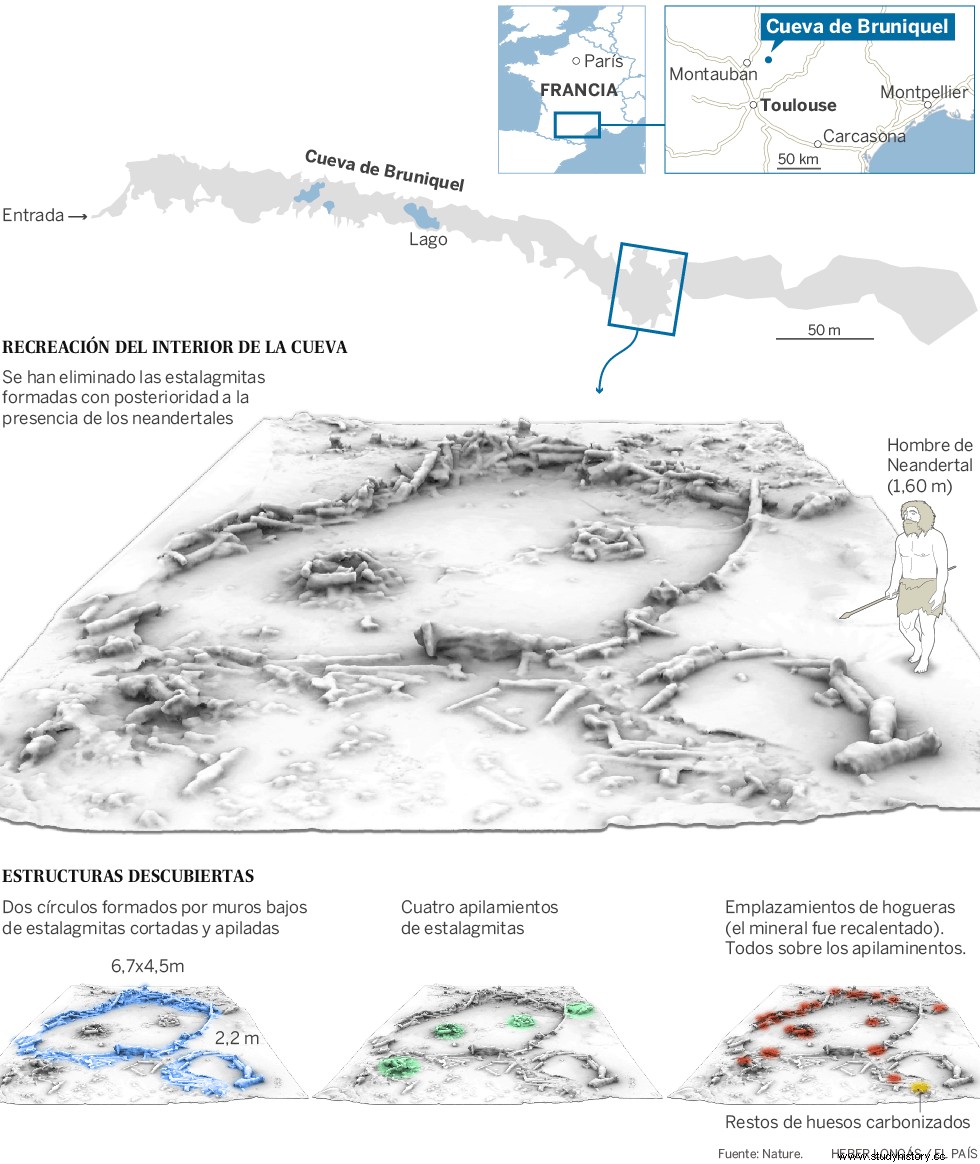When do we start building deliberately? It is not an easy question to answer and does not gather consensus; archaeological records are few and conservation is not always optimal. However, we could be a little closer to solving the enigma:the prestigious magazine Nature published yesterday the results of a discovery that took place in 1990 and has been investigated by the team of Jacques Jaubert from the University of Bordeaux. It is a set of circular structures built from broken stalagmites in the Bruniquel Cave, in the south of France, dating back to around 175,000 years ago, when Neanderthals were the only hominin species that inhabited Western Europe.

This discovery places the first evidence of dated constructions directly more than 100,000 years earlier than previously known. Some later evidence had been found in the La Garma Cave in Cantabria or in the Lazaret Cave in France with an antiquity of between 50,000 and 70,000 years, and in the Chauvet Cave, also in France, about 38,000 years ago.
One of the peculiarities of this finding is its optimal and intact state of conservation; For more than 150,000 years, the cave entrance has remained naturally sealed, preventing the entry of man and animals.
The find

The Cave of Bruniquel is a cavity of half a kilometer in which the structures have been found about 330 meters deep, in an environment of absolute darkness that does not enjoy any type of natural light.
The find consists of 400 pieces of about 30 centimeters of broken stalagmites —weighing just over two tons— arranged in about one hundred 100 meters in length. It is about 6 structures formed by these stalagmites; two of them are circular —6.7 and 4.5, and 2.2 and 2.1 meters— and the other four are stacked; two in the center of the largest circular structure and two others outside it. Traces of fire and bones have also been found in a nearby hearth.

Now the question that researchers and archaeologists are asking is if it is a punctual and accidental construction or if it was part of some type of regular and planned activity, and if it had a symbolic and ritual meaning or a domestic use. On this point, there is no consensus either. For archaeologists like the co-director of Atapuerca Eudald Carbobell —who has written an article for our Archeology and History No. 7, Neanderthals — It is undoubtedly something premeditated and with some kind of symbolic or ritual meaning, yet to be specified, as he has declared to some Spanish media. Antonio Rosas , a CSIC researcher, however, takes a position on the opposite side, and calls for caution until there is clearer evidence. This is an interesting and lively debate, very common in recent years around Nenadertales.
If the investigations show that this was a common activity, it would be a revolutionary idea, since until now there was no evidence that Neanderthals used and inhabited caves. On the other hand, erecting these structures must have involved an organized and intentional work, a fact that would reveal not only that the intentional constructions began earlier than previously believed, but also that the level of social organization of the Neanderthals was much more complex than we thought. to date.
Original source:Nature
 If you want to know much more about the fascinating world of Nenadertals, we recommend reading our new issue, dedicated exclusively on this topic with articles written by professionals and experts in the field:n.º7, Neanderthals .
If you want to know much more about the fascinating world of Nenadertals, we recommend reading our new issue, dedicated exclusively on this topic with articles written by professionals and experts in the field:n.º7, Neanderthals .
